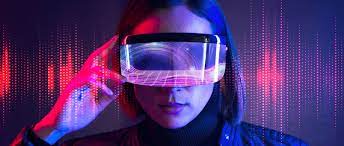With the current discussion on IoT and smart devices, the future looks bright for the connected world. We now know that regular everyday life will be changed for the better thanks to the latest technological advances. The IoT will impact everything from home automation to transportation in a fundamental way. Some experts predict that the IoT will completely alter our everyday life within ten years.
We know that IoT devices such as security cameras and heat sensors can be used in any home or business. When a device becomes part of the network it communicates with other devices. The network can identify motion, recognize an electrical charge or “talk” to a doorbell or telephone. Any action that is performed by an appliance on a network (such as turning on a light or off a television) can trigger actions from a centralized location. With this type of control, home owners can play video games, control household appliances or remotely manage a fleet of vehicles.
In the short term, we’re already seeing applications and integration of the IoT into consumer products. For instance, grocery stores are currently exploring the ability to monitor purchases and remotely make changes to the store. Retailers have already started using RFID technology to track inventory and determine where items should be placed. Even big-box retailers are exploring the ability to track and manage customer orders and access information about sales and traffic.
The IoT can also impact how we work and live. For example, car navigation systems and smartphone integration allow for complete vehicle tracking. Owners can now receive real-time location data about where their car is located and can control its acceleration, braking, turning and other functions. The driver can use the data to make informed decisions about what actions to take next. Think of car GPS like a GPS for your home.
Wireless internet is being used more to extend the functionality of devices and to provide wireless connectivity. One example is Loiifi, a low cost LoiFi transceiver that is designed to communicate with any smartphone or laptop running Windows XP operating systems. The transceiver emits radio waves that connect LoiFi enabled devices. As other smartphones or laptops are connected, the network grows and the number of users grows. Each device can maintain its own connection to the LoiFi network without relying on another device.
Parking your car is a difficult task if you don’t know if your car is insured or not. Insurance companies have been storing data about where cars are throughout the day and can locate a vehicle’s position in minutes. By using a GPS enabled device that connects to the public WiFi network, drivers can quickly check their auto insurance records and determine whether or not they have coverage. They can then quickly and easily get on the road without being stranded in their cars.
Real time feeds from sensors across the house can be retrieved from a tablet by an individual in the house or office. These devices will allow workers to monitor appliances and clothing temperatures to ensure optimal performance. By monitoring temperature levels, employees can ensure their clothes are safe and suitable for travel conditions and meetings. The potential for usage for this technology goes on as the networking device becomes more versatile and embedded within the home or office network.
Today’s modern-day devices and gadgets run on complex software and hardware systems. A major portion of those systems are not easily accessible or affordable for a typical consumer. A team at the Massachusetts Institute of Technology has developed an open-source framework called Open Whispernet which allows any computer to communicate with one another wirelessly over short distances. This is how IoT will change everyday life in the near future.




